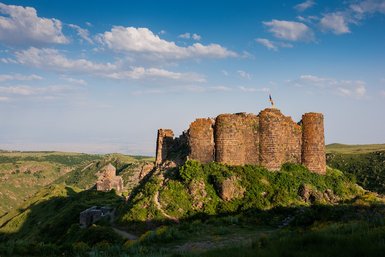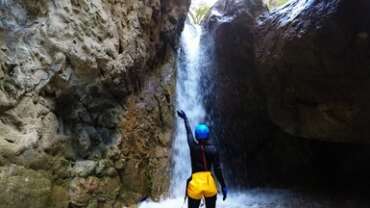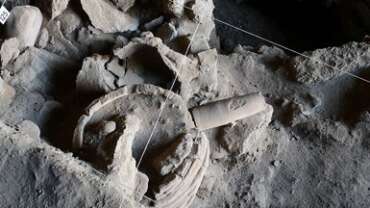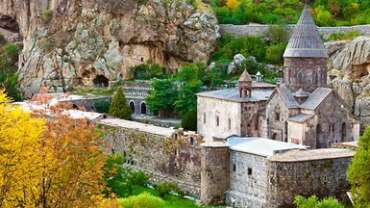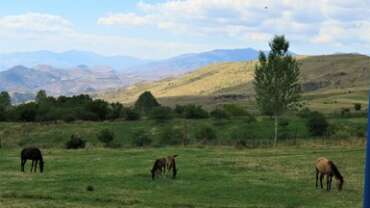Ancient Inhabitants, the Armenian Highlands!
The rocky mountains, stones, and caves of Armenia are covered with petroglyphs. The drawings on these stones and walls tell of everyday life and traditions of the ancient citizens of the mountainous highlands.
The rich and ancient culture of Armenia has left its mark throughout the whole territory of the country and its historical lands. Numerous excavations continuously reveal new and new facts about the ancient origin of Armenia and its people. Some findings even mention Armenia as the birthplace of civilization and mankind.
Petroglyphs play a huge part in the confirmation of the Ancient origin of Armenia. Stones throughout Armenia are covered with petroglyphs – the rock paintings tell the story of life and traditions of ancient inhabitants of the highlands. A huge collection of petroglyphs (V-IV millennium BC) is located on the mountain plateau of Ukhtasar – a beloved place by ancient pilgrims that today can be reached by off-road vehicles.
The Pre-Christian Era of Armenia
Once Armenia was filled with pagan temples as the nation worshiped the ancient Urartian deities, yet after the Christianization of the country most of the sites were demolished. Christian monasteries were built on top of the remains of the pagan temples. Despite this, some temples managed to survive and the preservation efforts successfully keep them in good condition.
The temple of the Sun god Mithra in Garni has been preserved since pagan times and is the only active temple in the former territory of the Soviet Union. Recent years have revealed new traces of the pagan past of the Armenia. The excavation of the Ogmik pagan complex in the village near the town of Amasia were recently resumed. Throughout these excavations archaeologists revealed sacrificial altars, rooms and remains of certain animals as well as statues and different carved symbols.
Christian Architecture of Armenia
Numerous Christian shrines are located on the outskirts of the capital and across Armenia. You can find lonely standing ascetic monasteries or monastic even complexes – cave monasteries and those resting at the bottom of deep valleys. The minimalistic interior of Armenian churches is further enriched with beautifully ornamented khachkars – cross stones, each unique in its type. For the demonstration of craftsmanship and symbolism, khachkars are now inscribed in the UNESCO list of Intangible Cultural Heritage as well as certain other Armenian sites and objects.
The Stone Army
Zorats Karer is perhaps the most mysterious place in Armenia. “The Stone Army” is the interpretation of the name of the Stonehenge of Syunik. As legend would have it, since ancient times the space was inhabited by industrious dwarves, for whom giant neighbors built those stone dwellings. According to another legend, in the V millennium BC an observatory operated here: on the day of the autumnal equinox, the sun rises right above the gates of the central ring, and many boulders have small holes on them, most likely for observing the stars. The third hypothesis states that Zorats Karer was once the ancient temple of the Sun god. The fourth one claims that these are obelisks and an entire army is buried beneath.
Petroglyphs
Take yourself back thousands of years and witness the stone engravings from ancient cultures inside the caves and on the rocks of mountains. This is where ancient civilizations started…
The Ancient Inhabitants of the Highlands
Petroglyphs are rock inscriptions and drawings found in Armenia. To date, there is an assumption that in the ancient centers of the origin of astronomical knowledge were the territory of Armenia and Asia Minor.
According to the English astronomer, the people who invented the ancient figures of the constellations lived, presumably, in the vicinity of Mount Ararat, also in the valley of the Euphrates River. The alleged justification for the findings of petroglyphs in Armenia, when in 1966 about 30,000 petroglyphs were discovered first on the Geghama Upland, then on the Vardenis Range and on the slopes of the Aragats mountains.
The petroglyphs of the Armenian Highlands with their volume, technique, a large number of characters and a variety of plots have no analogues in other countries. At the same time, some features of Armenian images suggest that they were used as a letter and had spiritual and ritual significance.
Petroglyphic culture in Ancient Armenia arose and developed inextricably linked with the cultural ancient world. Maps of the constellations, calendars and “open-air art galleries” were created by very educated people of that time – teachers and stone carving masters. Petroglyphs found in Armenia, depicted hunting scenes, space phenomena, astronomical concepts, constellations, mythical heroes, animals. There are petroglyphs depicting fantastic animals and people, such as the cult of the Moon, the Sun, the Snake, the Dragon, etc.
The art of cave paintings in Armenia is cloudy with rich imagination. As a result of the joint Armenian-German research program on ancient petroglyphs, a full-fledged database of Internet data has been created in Armenia, which is of unique value and will soon be included in the UNESCO World Heritage List.
Ancient Astronomical Sites
Ancient Armenia
Armenia is one of the cradles of ancient science and astronomical knowledge. There is much to see and learn about the development of astronomy in Armenia and how it impacted scientific knowledge throughout the world today.
One of the Cradles of Ancient Science
Contrary to its small territory and relatively small population, Armenia was always active and advanced in astronomy. There is evidence of ancient astronomical observatories in Armenia from a few thousand years ago. Among the astronomical activities that have left their traces in the territory of Armenia are: the rock art, ruins of ancient observatories, the ancient Armenian calendar, astronomical terms and names used in Armenian language since II-I millennia B.C., sky maps from Middle Ages, and most important, one of the largest modern observatories in the region, the Byurakan Astrophysical Observatory (BAO) with its 2.6m and 1m Schmidt telescopes.
The Transcaucasian Trail … paving a way through nature’s wonders and mysteries
Imagine this, a 3000 km long, world class hiking trail, making its way through the magnificent wilderness, a web of routes interconnecting a couple of dozens of national parks and protected areas going through Armenia and Georgia, a seemingly never ending route to conquer … sounds like a hiking aficionado’s dream, no ?
It only gets better.. In fact, this trail is located in a region that is rarely visited even though it’s filled to the brim with Historical heritage. A patch on the world map that is a cultural melting pot despite still remaining quite mysterious. To keep it short, this region is a sequence of cultural gems and biologically diverse ecosystems waiting to be explored.
And just to add the cherry on top, this won’t be just an out of this world hiking / trekking experience or an explorative adventure into some of this world’s best kept secrets, the journey will also be enriching on a human and social level. In fact, these regions are famous for the hospitality of their locals. After all Armenians are well known to love people, so don’t be stratelled or sceptical if you’re passing by a village and an Armenian family invites you for a mouth watering feast to get your energy levels up before you continue your way.
A Walk Through History – Armenia’s Fortresses
One of the remaining structures of evidence of ancient Armenian history is its fortresses. Many of them were destroyed by the enemy or earthquakes, but there are fortresses that can still be visited today…
Throughout history, Armenia has been in the crossroads of countries fighting each other for power. In turn, there have been many battles on Armenia’s land, causing many ancient fortresses to be destroyed. Armenia is also in an area prone to earthquakes that have made their marks on these structures as well. However, the ruins of these castles and fortresses are still a sight to see and often sit on top of peaks and hills with beautiful views. Tourists who are interested in Armenia’s history should visit these ancient fortresses and explore the ruins of what used to be…



